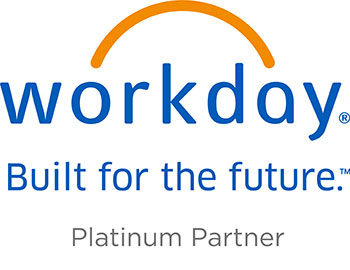Introduction and Key Findings

Introduction
Both individuals and organizations can benefit from mentoring. For institutions, it is a "relatively low-cost and high-reward" activity to increase engagement among employees and groom and retain institutional talent.1 For individuals, engaging in mentoring is associated with higher compensation, increased career commitment and satisfaction, and more promotions.
Mentoring is an opportunity to grow a diverse workforce and ensure a viable and consistent talent pipeline. This is particularly important for higher education, whose IT workforce is getting older and has fewer Millennials, women, and minorities compared with the general U.S. workforce.2 This report includes a particular focus on mentoring these underrepresented groups to provide insight into how higher education IT might recruit, retain, and grow professionals from these demographics.
By sharing these findings, we aim to raise awareness of the importance of and interest in mentoring among the higher education IT workforce to expand professional development opportunities across all organizational levels, improve retention, and increase the opportunities and growth for underrepresented groups.
Key Findings
- Seventy-one percent of higher education IT mentors and 86% of mentees (or protégés) reported that mentoring had made a moderate or great contribution to their professional development. About 60% of higher education IT mentors have aspirations for IT executive leadership. Fifty-one percent of mentees were in mentoring relationships described as "senior executive mentor, aspiring executive mentee," suggesting that mentees view mentoring relationships as a pathway to executive leadership. The most frequently cited benefit of mentoring (cited by around 70% of CIOs, managers, and staff) was having a "safe space/sounding board for problems and challenges."
- Forty-one percent of those surveyed want to be in a mentoring relationship but are not currently in one. Overall, more higher education IT employees are engaged as mentors than as protégés, and few employees have no interest in engaging in a mentoring relationship.3
- One-third of all mentoring relationships developed from mentee requests. This finding suggests that the responsibility likely is placed on mentees to initiate the relationship, which could contribute to the low numbers of higher education IT employees who are mentees and the high numbers of employees who desire to be in a mentoring relationship but are not.
- Women are active in mentoring relationships at rates similar to those of men. Although women are in the minority among higher education IT employees, their rate of engagement in mentoring indicates a strong need among this underrepresented population.
- Women (31%) and men (34%) served as mentors at similar rates, and mentoring relationships most often are between members of the same gender. Same-gender mentors can offer specific guidance and support in a male-majority field, but mixed-gender mentoring can contribute to a more inclusive working environment due to male mentors engaging with and promoting their female mentees.
- Fifty-one percent of Millennial employees were not in a mentoring relationship but wanted to be. Millennials expect to engage in mentoring within their workplace. To attract, retain, and grow talent, higher education IT needs to enable mentoring relationships for Millennial employees.
- The majority of mentors (57%) and protégés (82%) work at the same institution. CIOs had the largest percentage of mentees and mentors working at another institution or outside higher education IT, likely due to career pathways of CIOs and the cross-institutional relationships that develop through their careers. Smaller institutions and BA and AA institutions, compared with other institution types, had larger numbers of mentees working at another institution, likely due to their smaller IT departments.
- Forty percent of all mentoring relationships were characterized as peer mentoring, followed by mentees who aspire to executive positions and who have current executives as mentors (31%). Peer mentoring can be a means for employees at the same career stage to support each other in their career goals. Engaging in a mentoring relationship may also be perceived as a pathway to IT executive leadership, attesting to the perceived importance of mentoring among higher education IT employees.
- A majority of mentors (74%) and mentees (65%) met either once a week or once a month. Navigating appropriate time frames for mentoring meetings may depend on the individual needs of both parties but should be incorporated into employees' workflow.
Learn More
Access additional materials at The IT Workforce in Higher Education, 2019: CIOs, DEI, HR, Mentoring, and Salaries.
Thank You to Our IT Workforce Research Sponsor

© 2019 EDUCAUSE. The text of this work is licensed under a Creative Commons BY-NC-ND 4.0 International License.
Joseph D. Galanek and Shana Campbell. Mentoring in Higher Education IT, 2019. Research report. Louisville, CO: ECAR, August 2019.
Notes
-
Chris Farrell, "Why More and More People Are Eager to Mentor," Forbes, September 30, 2016.
↩︎ -
Joseph D. Galanek, Dana C. Gierdowski, and D. Christopher Brooks, The Higher Education IT Workforce Landscape, 2019, research report (Louisville, CO: ECAR, February 2019).
↩︎ -
Survey respondents who reported being mentored or being mentors are not necessarily in mentoring relationships with each other. Consequently, the same question asked of each group separately often results in different percentages.
↩︎